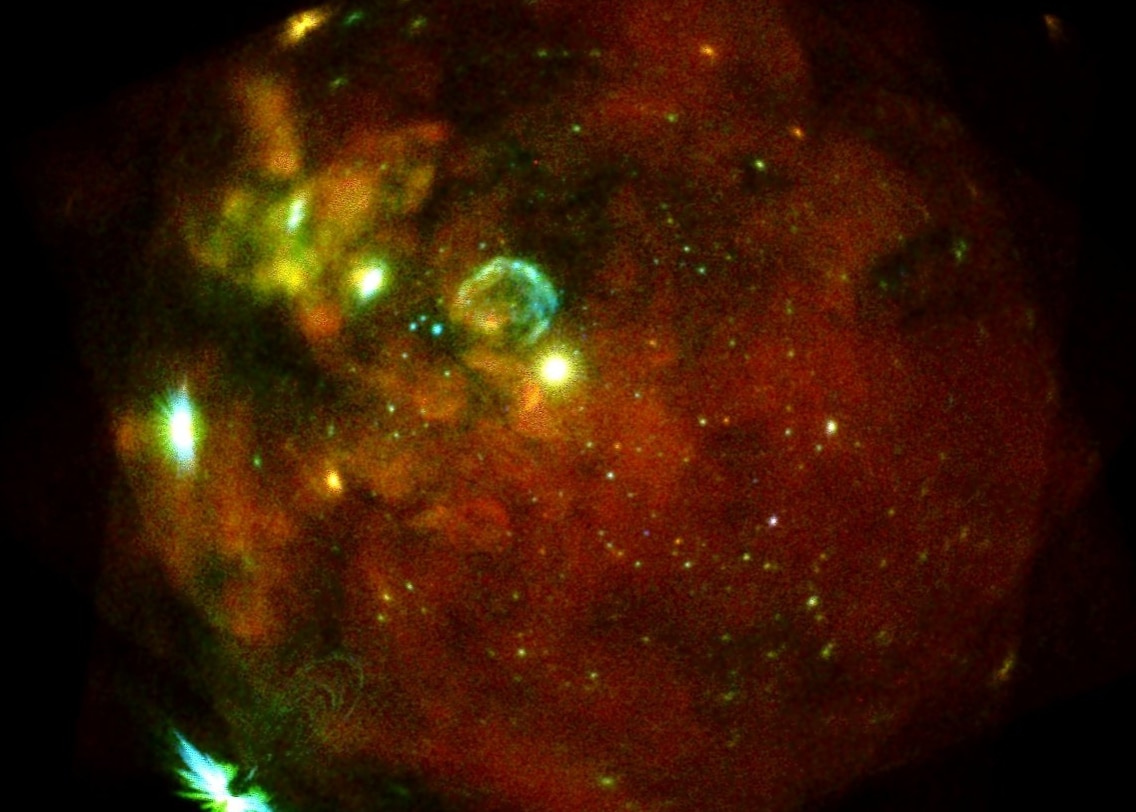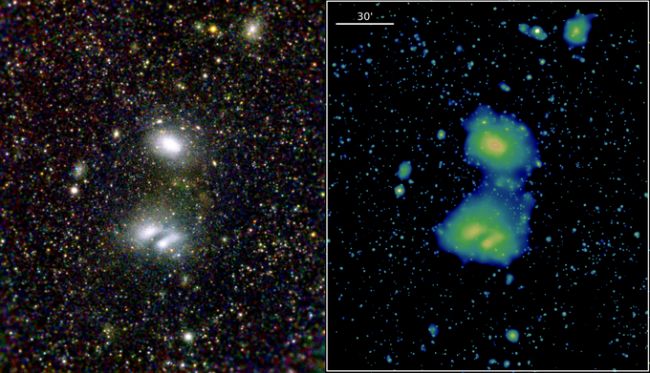Create a free profile to get unlimited access to exclusive videos, sweepstakes, and more!
Germany's new dark-energy-hunting telescope snaps inaugural 'first light' images

Witness the first stunning shots captured from the German X-ray telescope eROSITA, shared last week with the public at the Max Planck Institute for Extraterrestrial Physics (MPE) in Bavaria, Germany.
These inaugural "first light" images delivered from the new dark-energy-hunting telescope are actually composites of pictures taken from all seven of the next-generation telescope's Wolter-1 mirror modules, which have been diligently scanning the sky with custom CCD cameras for the past two weeks.
"These first images from our telescope show the true beauty of the hidden universe," Peter Predehl, principal investigator of eROSITA, said in a statement. "To meet our science goals, we needed enough sensitivity to detect the most-distant clusters of galaxies in the universe over the whole sky and resolve them spatially. These first light images show that we can do exactly that, but we can go a lot further."
Tracking down stellar treasure since Oct. 13, the German space agency's (DLR) hi-tech eROSITA telescope snagged these illuminating X-ray images of the Large Magellanic Cloud (LMC) and A3391/3395, a swirling pair of galaxy clusters spinning some 800 million light-years from Earth.
Germany's eROSITA was first launched from the Baikonur Cosmodrome in Kazakhstan on Jul. 19, 2019 using a Spektrum-Röntgen-Gamma satellite aboard a Proton rocket. The ambitious project is all part of Spectrum Roentgen Gamma (SRG), a comprehensive Russian-German collaborative astrophysical-observation mission, which also includes the Russian ART-XC telescope.
This bounty of initial images discovered some curious details in the neighboring LMC, including brilliant leftovers of the supernova SN 1987A, as well as several foreground stars and remote active galactic nuclei.
Scientists hope the new telescope and its highly sensitive equipment will help capture extremely detailed images of heavenly objects like stars and diffuse gas, but additionally could be employed in the search for and investigation of elusive dark energy.
"This is a dream come true. We now know that eROSITA can deliver on its promise and create a map of the whole X-ray sky with unprecedented depth and detail," eROSITA project scientist Andrea Merloni said in an official statement. "The legacy value will be enormous. Beside the beautiful images like the ones we're showing today, catalogues of millions of exotic celestial objects such as black holes, galaxy clusters, neutron stars, supernovae and active stars will be used by astronomers for years to come."





























